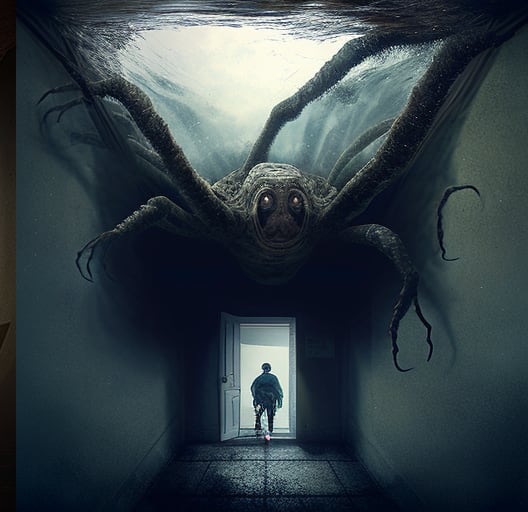
| Distribúsje | Netnormaal | Netnormaal | Netnormaal | Normaal | Normaal | Normaal | Normaal | Normaal |
|
Alle fragen
Alle fragen
Myn grutste eangst is
| ||||||||
| Myn grutste eangst is | ||||||||
| Answer 1 | - | Swak posityf 0.0519 | Swak posityf 0.0249 | Swak negatyf -0.0201 | Swak posityf 0.0938 | Swak posityf 0.0393 | Swak negatyf -0.0148 | Swak negatyf -0.1536 |
| Answer 2 | - | Swak posityf 0.0160 | Swak negatyf -0.0089 | Swak negatyf -0.0381 | Swak posityf 0.0645 | Swak posityf 0.0505 | Swak posityf 0.0138 | Swak negatyf -0.0948 |
| Answer 3 | - | Swak negatyf -0.0036 | Swak negatyf -0.0099 | Swak negatyf -0.0465 | Swak negatyf -0.0421 | Swak posityf 0.0504 | Swak posityf 0.0770 | Swak negatyf -0.0232 |
| Answer 4 | - | Swak posityf 0.0441 | Swak posityf 0.0306 | Swak negatyf -0.0266 | Swak posityf 0.0174 | Swak posityf 0.0382 | Swak posityf 0.0265 | Swak negatyf -0.1041 |
| Answer 5 | - | Swak posityf 0.0220 | Swak posityf 0.1235 | Swak posityf 0.0108 | Swak posityf 0.0747 | Swak posityf 0.0006 | Swak negatyf -0.0155 | Swak negatyf -0.1747 |
| Answer 6 | - | Swak negatyf -0.0019 | Swak posityf 0.0038 | Swak negatyf -0.0625 | Swak negatyf -0.0102 | Swak posityf 0.0264 | Swak posityf 0.0858 | Swak negatyf -0.0359 |
| Answer 7 | - | Swak posityf 0.0103 | Swak posityf 0.0310 | Swak negatyf -0.0672 | Swak negatyf -0.0302 | Swak posityf 0.0540 | Swak posityf 0.0709 | Swak negatyf -0.0528 |
| Answer 8 | - | Swak posityf 0.0651 | Swak posityf 0.0685 | Swak negatyf -0.0275 | Swak posityf 0.0124 | Swak posityf 0.0401 | Swak posityf 0.0177 | Swak negatyf -0.1337 |
| Answer 9 | - | Swak posityf 0.0752 | Swak posityf 0.1592 | Swak posityf 0.0059 | Swak posityf 0.0602 | Swak negatyf -0.0071 | Swak negatyf -0.0483 | Swak negatyf -0.1823 |
| Answer 10 | - | Swak posityf 0.0747 | Swak posityf 0.0607 | Swak negatyf -0.0134 | Swak posityf 0.0271 | Swak posityf 0.0335 | Swak negatyf -0.0111 | Swak negatyf -0.1346 |
| Answer 11 | - | Swak posityf 0.0632 | Swak posityf 0.0502 | Swak negatyf -0.0089 | Swak posityf 0.0089 | Swak posityf 0.0283 | Swak posityf 0.0252 | Swak negatyf -0.1282 |
| Answer 12 | - | Swak posityf 0.0426 | Swak posityf 0.0888 | Swak negatyf -0.0328 | Swak posityf 0.0321 | Swak posityf 0.0353 | Swak posityf 0.0263 | Swak negatyf -0.1530 |
| Answer 13 | - | Swak posityf 0.0700 | Swak posityf 0.0916 | Swak negatyf -0.0386 | Swak posityf 0.0291 | Swak posityf 0.0440 | Swak posityf 0.0155 | Swak negatyf -0.1638 |
| Answer 14 | - | Swak posityf 0.0811 | Swak posityf 0.0861 | Swak negatyf -0.0041 | Swak negatyf -0.0124 | Swak posityf 0.0081 | Swak posityf 0.0148 | Swak negatyf -0.1207 |
| Answer 15 | - | Swak posityf 0.0548 | Swak posityf 0.1223 | Swak negatyf -0.0347 | Swak posityf 0.0118 | Swak negatyf -0.0133 | Swak posityf 0.0266 | Swak negatyf -0.1157 |
| Answer 16 | - | Swak posityf 0.0702 | Swak posityf 0.0202 | Swak negatyf -0.0390 | Swak negatyf -0.0397 | Swak posityf 0.0747 | Swak posityf 0.0185 | Swak negatyf -0.0767 |

